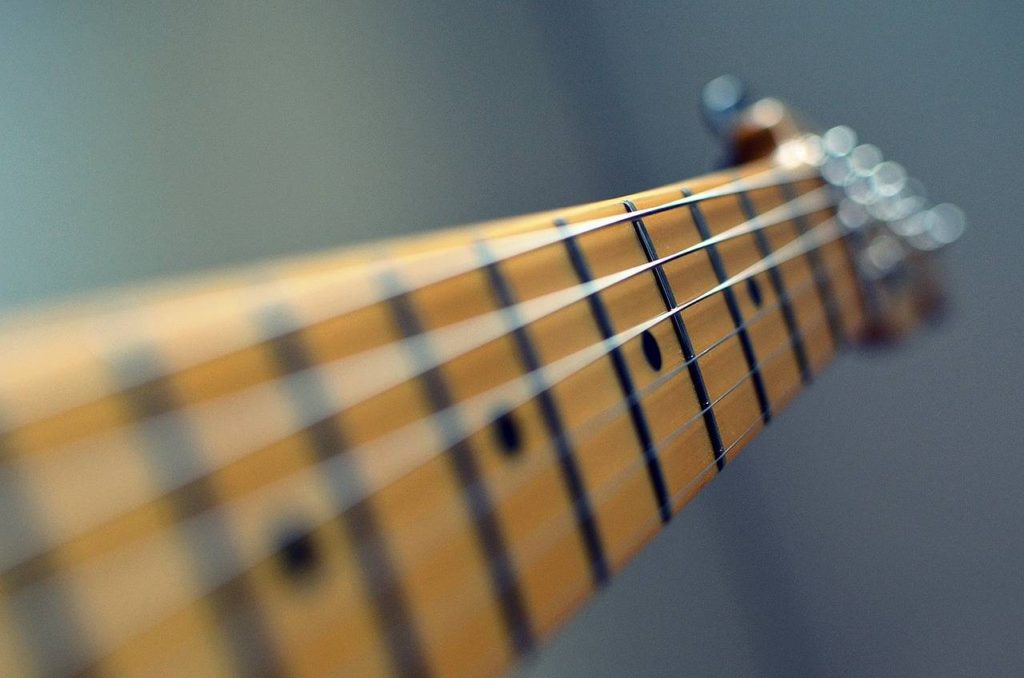By Gary Heimbauer for Guitar Tricks and 30 Day Singer
Country lead guitar players tend to be really good at mixing chords with their lead ideas and blurring the line between rhythm and lead guitar. How do they do this? Generally, they are able to do this by having a firm working knowledge of triads and smaller chord shapes all over the neck that they can play off of, and also by using double stops to move between chord changes.
One classic double-stop chord move is to start on the root and the third of a chord in any basic shape and walk it up to the next triad of the same chord a few frets higher on the neck.
Let me show you what I mean. Let’s use the chord progression G – C – D. This is an I-IV-V progression in the key of G. We’ll play the G chord in the “E Shape,” as it relates to CAGED.
After playing the chord, play just the root on the high E string, and the third of the chord, which is on the G string as a double stop. After that, walk the root note up two frets, and harmonize it with a minor third, which will be on the same fret of the G string. This keeps us in the key of G.
The ii chord, A minor, obviously has a minor chord. Now go up chromatically one fret with the same shape to the 6th fret, and then go up chromatically again to end on the 7th fret. Where you end up is back on the G chord in the next triad shape (The D shape). Cool right?
Now let’s do the same thing on the IV chord, C.
Here we’re starting on the A shape of a C major chord in terms of the CAGED system, and after playing the chord, we play the root on the G string, and the major third on the B string as a double stop. Then we move that up to the 6th fret on the B string, and the 7th fret on the G string. This is technically the root and minor third of a D minor chord. If you are a little lost, definitely check out some easy online guitar lessons. Then we move that up chromatically one fret, and then another fret, arriving back at the C major chord, in the E shape!
Now let’s try the same thing on the D chord (IV) in the D shape.
Here we’ll start by playing the full chord, and then we’ll isolate the third on the high E string, and the root on the B string. Then we walk that up to the root and third of an E minor chord, which means the minor third on the third fret of the high E string, and the root on the fifth fret of the B string, and then we take that shape and walk it up chromatically, as before landing back on a D major chord in the C shape! As you can see, this move works on all chord shapes, and has the same kind of sound! You can get a slightly different flavor by removing the chromatic walk-up, which will sound like the intro to a song like Brown Eyed Girl. With this lick, you’ll have another tool in your toolbelt to use when playing with friends. Can you use this lick in a different style?



